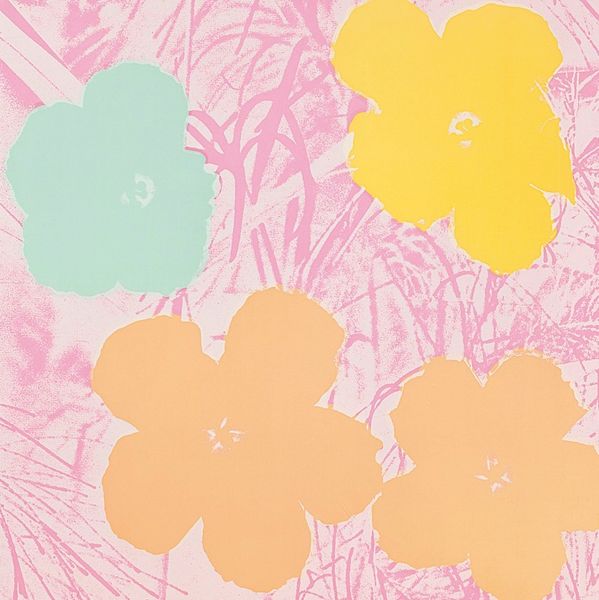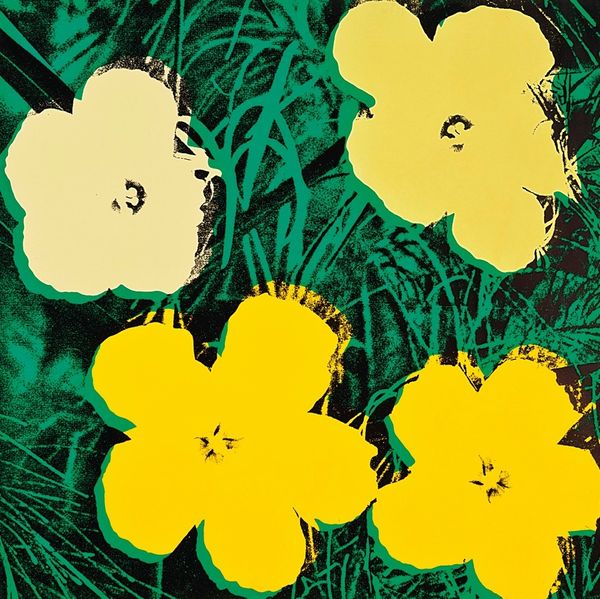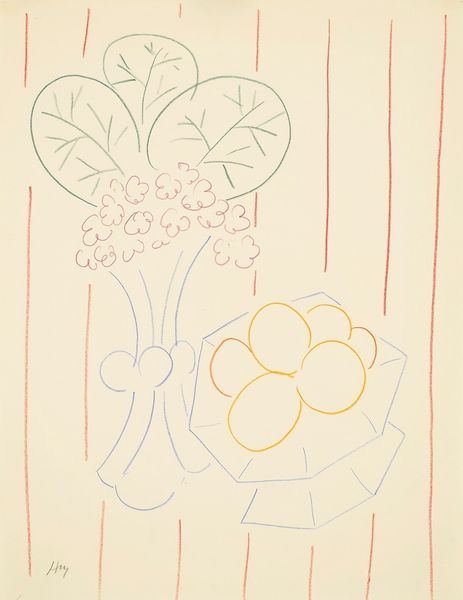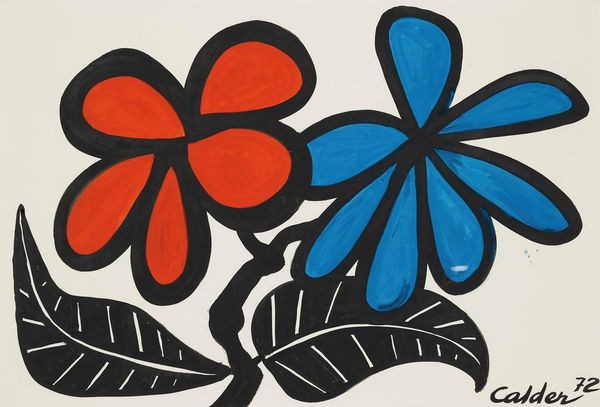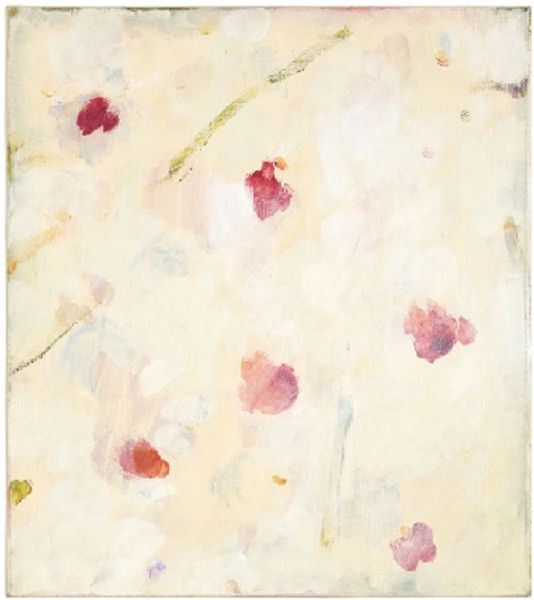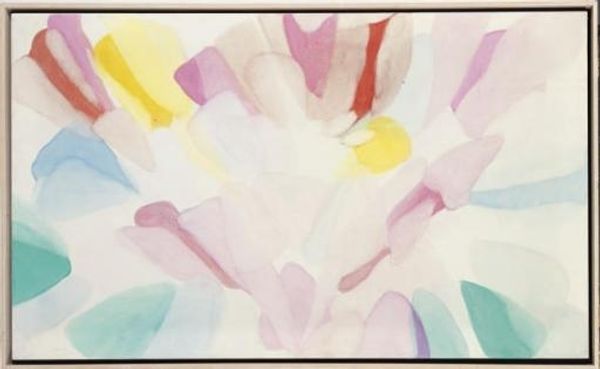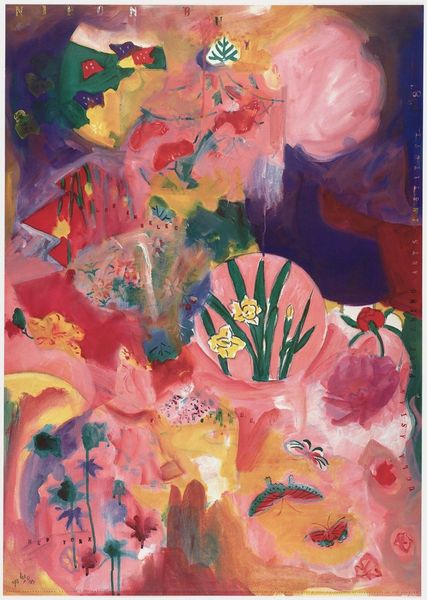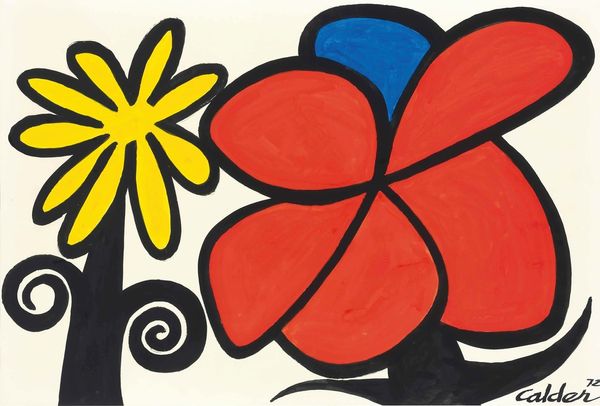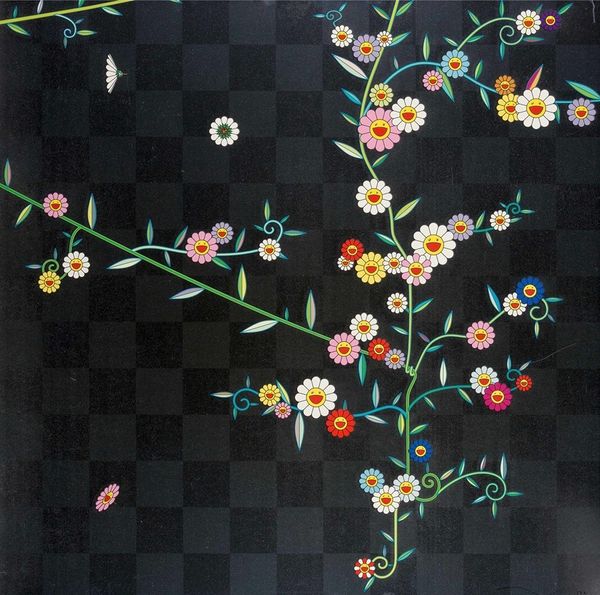
#
naturalistic pattern
#
geometric pattern
#
pattern background
#
abstract pattern
#
organic pattern
#
flower pattern
#
repetition of pattern
#
pop-art
#
pattern repetition
#
layered pattern
#
funky pattern
Copyright: Modern Artists: Artvee
Editor: So, here we have Andy Warhol’s “Flowers #1” from 1970. The bold colors really strike me, it’s cheerful and synthetic at the same time. How do you see this piece? Curator: Formally, I observe the interplay between figure and ground is quite dynamic. Note the contrasting hues of the floral shapes against the patterned backdrop. The screen-printing technique flattens the image, emphasizing surface over depth. Consider also the repetition; it creates a visual rhythm. Editor: Yes, the repetition definitely amplifies the "Pop" aspect of it all. But does the almost mechanical reproduction take away from its artistic merit in some way? Curator: The intentional repetition and slight variations in color, form, and texture introduce a critical discourse on mass production. By embracing and exaggerating the mechanical aspects of printmaking, Warhol questions traditional notions of artistic originality and skill. We see a dialogue emerge, unsettling notions of 'good' and 'bad' art. Editor: I see. It’s about the visual experience and commentary, not just the perfect rendering of a flower. Curator: Precisely. The vibrant palette and simplified forms contribute to an immediate visual impact, demanding an intellectual interpretation on art and culture of that period. Editor: So, by examining the formal elements—color, form, and repetition—we gain a much deeper understanding of the artwork's intent. Curator: Precisely! Considering visual cues carefully unveils the essence of the artist's vision.
Comments
No comments
Be the first to comment and join the conversation on the ultimate creative platform.
